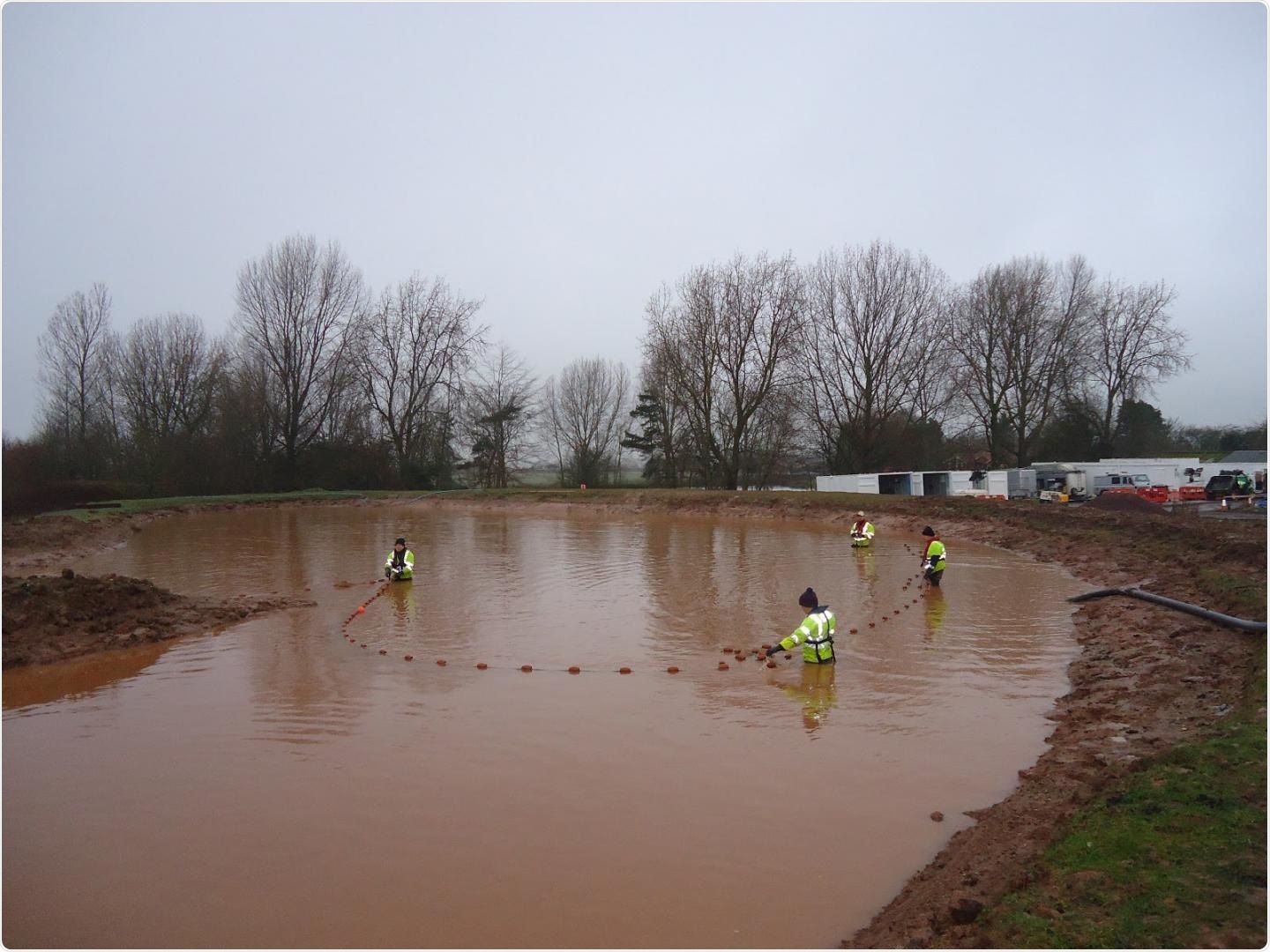Organisms typically discharge DNA in their environments through sloughed skin cells, gametes, or metabolic waste, and this genetic material is called environmental DNA, or eDNA for short.

EA team operating at the fishery farm during fish translocation. Image Credit: Dr Watson H.V.
Since eDNA can be directly obtained from air, soil, or water, and examined using molecular tools without having to capture the organisms themselves, this genetic data can be employed to report biodiversity at a large scale.
For example, the presence of various fish species can be concurrently identified by sampling and sequencing eDNA from water and, at the same time, eliminating the use of harmful capture techniques, like netting, electrofishing or trapping, presently used for fish monitoring.
Although the eDNA strategy has already been used in several studies regarding the diversity of fish in diverse types of aquatic habitats, such as marine systems, lakes, and rivers, its efficiency in measuring the abundance of species (number of individuals for each species) is yet to be established.
Although earlier studies performed in controlled aquatic systems, like aquaria, artificial ponds, and experimental tanks, have reported a positive relationship between the amount of DNA detected in the water and the abundance of species, it still remains elusive as to how the outcomes would actually fare in natural surroundings.
Now, a team of researchers from the University of Hull along with the Environment Agency in the United Kingdom took this unique opportunity to employ an invasive species eradication program performed in a fishery farm based in the United Kingdom, as the ultimate case study to assess the success rate of eDNA sampling in determining the abundance of species in natural aquatic habitats.
The researchers’ findings were published in Metabarcoding and Metagenomics, an open-access, peer-reviewed journal.
Investigating the quantitative power of eDNA in natural aquatic habitats is difficult, as there is no way to ascertain the real species abundance and biomass (weight) in aquatic systems, unless catching all target organisms out of water and counting/measuring them all.”
Cristina Di Muri, PhD Student, University of Hull
During the elimination process, the team drained the original fish ponds and placed all the fish, except the difficult invasive species called the topmouth gudgeon in a new pond, while treating the original ponds with a piscicide to eradicate the invasive fish.
The researchers returned the fish to their original ponds after removing the invasive fish. Meanwhile, they also counted, detected, and weighed all individuals from experts. This enabled them to accurately estimate biomass and the abundance of fish.
We then carried out our water sampling and ran genetic analysis to assess the diversity and abundance of fish genetic sequences, and compared the results with the manually collected data. We found strong positive correlations between the amount of fish eDNA and the actual fish species biomass and abundance, demonstrating the existence of a strong association between the amount of fish DNA sequences in water and the actual fish abundance in natural aquatic environments.”
Cristina Di Muri, PhD Student, University of Hull
The researchers effectively detected all fish species in the ponds—from the least abundant ones (that is, one chub of 0.7 kg) to the most abundant ones (that is, 293 carps of 852 kg total weight), suggesting the high precision of the non-invasive strategy.
Furthermore, we used different methods of eDNA capture and eDNA storage, and found that results of the genetic analysis were comparable across different eDNA approaches. This consistency allows for a certain flexibility of eDNA protocols, which is fundamental to maintain results comparable across studies and, at the same time, choose the most suitable strategy, based on location surveyed or resources available.”
Cristina Di Muri, PhD Student, University of Hull
“The opportunity of using eDNA analysis to accurately assess species diversity and abundance in natural environments will drive a step change in future species monitoring programmes, as this non-invasive, flexible tool is adaptable to all aquatic environments and it allows quantitative biodiversity surveillance without hampering the organisms’ welfare,” Di Muri concluded.
Source:
Journal reference:
Di Muri, C., et al. (2020) Read counts from environmental DNA (eDNA) metabarcoding reflect fish abundance and biomass in drained ponds. Metabarcoding and Metagenomics. doi.org/10.3897/mbmg.4.56959.